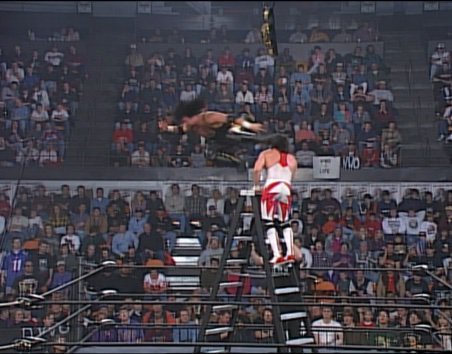
However, Schiavone does say that Bischoff going into story mode as he went on about how the nWo was going to change things got stale over the event. Tony says that Eric Bischoff and Ted DiBiase did a good job throughout the pay-per-view on commentary. He says that while they might have disagreed with his critiques at the time, twenty years later it is hard to deny that Dave Meltzer was correct in his analysis. Tony later recants his statement about Meltzer hating everything that he does, but he did put Meltzer over for having a lot of powerful opinions in the business. Schiavone says that there was some heat between Bischoff and Meltzer at the time, but Tony also comments that Meltzer seemed to have a problem with anything that he announced. The pay-per-view had a very different look to it as they laid black carpet over the mats at ringside, and dressed the arena in a nWo look, however the matches weren’t up to par with what was expected.Ĭonrad reads that Meltzer’s poll gave the show a resounding “thumbs down” of 97.8%. The intro of the pay-per-view with the nWo receiving a police escort while riding in garbage trucks to the event was pre-taped the night before. The event took place on a Saturday night because the next night was Super Bowl XXXI. But, he says that everyone on the production side of the company was in favor of the event.


Schiavone reiterates that he didn’t work on the marketing, booking, or promotional end, therefore he wasn’t privy to know every specific details about what was going on backstage. He does say that although there was a lot of “ass kissing” backstage, everyone agreed that it was a good idea to give it a shot. Tony says that he was supportive of the nWo getting their own PPV because the angle was hot. The nWo’s Fist Pay-Per-View Becomes A Reality WWE WCW actually entertained the notion of raising the price of their nWo merchandise at one point due to the fact that they were selling so much merchandise. Schiavone says that when the nWo first started there was thought that they wanted to make nWo a separate brand. The nWo was a fantastic property of WCW and Eric Bischoff actually entertained the notion of running nWo and WCW pay-per-views as separate entities. Therefore, in January 1997, the nWo was given their own pay-per-view. WCW was six or seven months into the nWo story, and their merchandise was selling like hotcakes. Tony says that it might have boiled down to a lack of confidence as to why other markets wouldn’t take a chance on WCW as well. WCW was still a national company operating on a regional basis. They were essentially being shut out of the larger buildings in other markets. He explains that WCW didn’t jump around as much as the WWF did during that time period because there weren’t a lot of buildings that they could go into because Vince still had a stronghold over some of the business. Schiavone says that he can’t comment as to exactly why WCW kept bringing Starrcade to Nashville every year, but he does say that the Music City was a great place for WCW.

Piper went over Hogan by submission at Starrcade and the nWo was as hot as ever. 1996 ended with Roddy Piper challenging Hulk Hogan to a match at Starrcade.


 0 kommentar(er)
0 kommentar(er)
